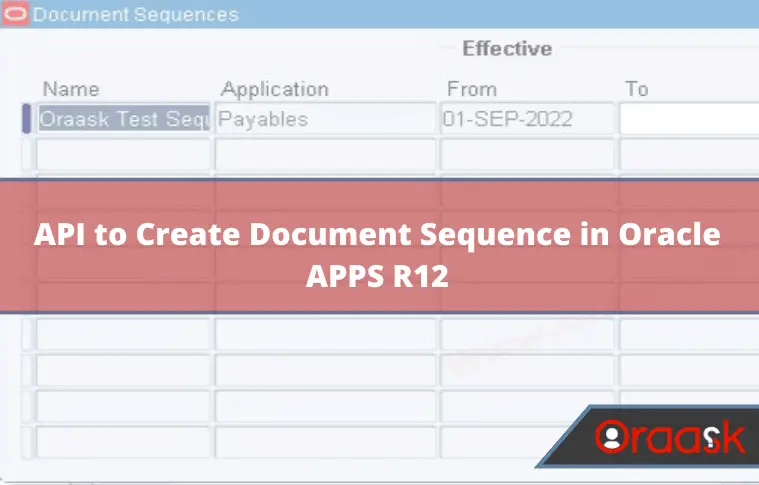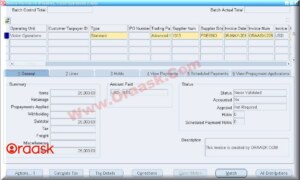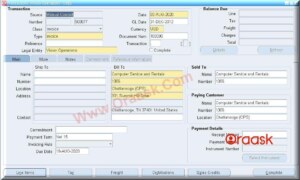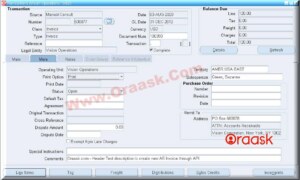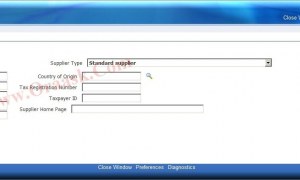Introduction
A document sequence uniquely numbers documents generated by an Oracle Applications product (for example, invoices generated by Oracle Receivables). Using the Sequence Assignments window, you assign your sequence to number only those documents that satisfy the rules you define. Source
This article will give an API code example to create a document sequence from the backend.
Goal
Create a document sequence using API in Oracle APPS.
Standard API name: “FND_SEQNUM.DEFINE_DOC_SEQ“.
Forms Or Pages
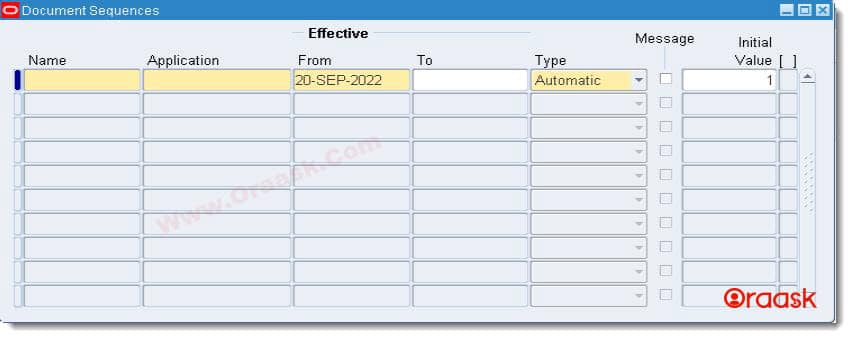
API Parameters Description
This function is used to create new DocumentSequences in batch form.
Input (Mandatory)
- app_id: Application ID. (Mandatory)
- docseq_name: Document sequence name. (Mandatory)
- docseq_type: Document sequence type (‘A’=automatic,’G’=gapless,’M’=manual). (Mandatory)
- msg_flag: Message Flag (‘Y’/’N’). (Mandatory)
- init_value: Initial sequence value. (Mandatory)
- p_startDate: Effective Start date. (Mandatory)
- p_endDate: Effective End date. (Optional – Default NULL)
API Code Example
------------------------------------------
-- Description: API to define document sequence in oracle EBS R12
-- Created By: Hassan @ Oraask.com
-- Creation Date: 21-SEP-2022
------------------------------------------
DECLARE
L_APPLICATION_NAME VARCHAR2 (500) := 'Payables';
L_DOC_SEQUENCE_NAME VARCHAR2 (500) := 'Oraask Test Sequence';
L_DOC_SEQUENCE_TYPE VARCHAR2 (500) := 'A'; --Sequence Type ('A'=automatic,'G'=gapless,'M'=manual)
L_MSG_FLAG VARCHAR2 (500) := 'Y';
L_INIT_VALUE VARCHAR2 (500) := 1; -- Initial sequence value
L_START_DATE DATE := '01-SEP-2022'; -- Effective Start date
L_END_DATE DATE := NULL; -- Effective End date
L_APPLICATION_ID NUMBER;
L_DOC_SEQUENCE_ID NUMBER;
L_RETURN NUMBER;
L_ERR_MSG VARCHAR2 (4000);
BEGIN
DBMS_OUTPUT.PUT_LINE ('**********************************************');
DBMS_OUTPUT.PUT_LINE ('Get Application ID');
-- Define a new document sequence
BEGIN
SELECT APPLICATION_ID
INTO L_APPLICATION_ID
FROM FND_APPLICATION_TL
WHERE APPLICATION_NAME = L_APPLICATION_NAME;
EXCEPTION
WHEN OTHERS THEN
L_ERR_MSG := 'Application Name is not correct - ' || SQLERRM;
END;
DBMS_OUTPUT.PUT_LINE ('L_APPLICATION_ID = ' || L_APPLICATION_ID);
L_RETURN :=
FND_SEQNUM.DEFINE_DOC_SEQ (APP_ID => L_APPLICATION_ID
,DOCSEQ_NAME => L_DOC_SEQUENCE_NAME
,DOCSEQ_TYPE => L_DOC_SEQUENCE_TYPE
,MSG_FLAG => L_MSG_FLAG
,INIT_VALUE => L_INIT_VALUE
,P_STARTDATE => L_START_DATE
,P_ENDDATE => L_END_DATE);
IF (L_RETURN <> FND_SEQNUM.SEQSUCC) THEN
DBMS_OUTPUT.PUT_LINE ('Fail: ' || TO_CHAR (L_RETURN));
DBMS_OUTPUT.PUT_LINE ('Application Name: ' || L_APPLICATION_ID);
DBMS_OUTPUT.PUT_LINE ('Document Sequence Name: ' || L_DOC_SEQUENCE_NAME);
DBMS_OUTPUT.PUT_LINE ('Document Sequence Type: ' || L_DOC_SEQUENCE_TYPE);
DBMS_OUTPUT.PUT_LINE ('Initial Sequence Value: ' || L_INIT_VALUE);
DBMS_OUTPUT.PUT_LINE ('Effective Start Date: ' || L_START_DATE);
DBMS_OUTPUT.PUT_LINE ('Effective End Date: ' || L_END_DATE);
L_ERR_MSG :=
(CASE
WHEN L_RETURN = -1 THEN
'An oracle error occurred and we have raise the error with fnd.message and app_exception.raise_exception function'
WHEN L_RETURN = -2 THEN
'No assignment exists for the set of parameters'
WHEN L_RETURN = -3 THEN
'The assigned sequence is inactive - so far this is not used here, if the trx_date is out of range for any assignment we return noassign - the ''C'' code does'
WHEN L_RETURN = -4 THEN
'No assignment exists for the set of parameters'
WHEN L_RETURN = -5 THEN
'A sequence value was not passed for a manual seq'
WHEN L_RETURN = -6 THEN
'The manual sequence value passed is not unique'
WHEN L_RETURN = -7 THEN
'Sequential Numbering is not used, continue'
WHEN L_RETURN = -8 THEN
'Sequential Numbering is always used and there is no assignment for this set of parameters'
WHEN L_RETURN = -9 THEN
'Received an invalid DocSeq type'
WHEN L_RETURN = -10 THEN
'The sequence Name value passed is not unique'
WHEN L_RETURN = -11 THEN
'Received an invalid Message Flag'
WHEN L_RETURN = -12 THEN
'Received an invalid start and end date combo for these parameters'
WHEN L_RETURN = -13 THEN
'Received an invalid Doc_Seq Name'
WHEN L_RETURN = -14 THEN
'Received an invalid Category Code'
WHEN L_RETURN = -15 THEN
'Received an invalid Set of Books ID'
WHEN L_RETURN = -16 THEN
'Received an invalid Method Code'
WHEN L_RETURN = -17 THEN
'Received an invalid Method Code'
END);
ELSE
SELECT DOC_SEQUENCE_ID
INTO L_DOC_SEQUENCE_ID
FROM FND_DOCUMENT_SEQUENCES
WHERE NAME = L_DOC_SEQUENCE_NAME;
DBMS_OUTPUT.PUT_LINE ('L_RETURN = ' || L_RETURN);
DBMS_OUTPUT.PUT_LINE ( (CASE WHEN L_RETURN = 0 THEN 'Document Sequence Created Successfully with ID: ' || L_DOC_SEQUENCE_ID END));
END IF;
DBMS_OUTPUT.PUT_LINE ('**********************************************');
EXCEPTION
WHEN OTHERS THEN
ROLLBACK;
DBMS_OUTPUT.PUT_LINE ('Error : ' || SQLERRM);
END
/Output
Get Application ID
L_APPLICATION_ID = 200
L_RETURN = 0
Document Sequence Created Successfully with ID: 2623
Final Result
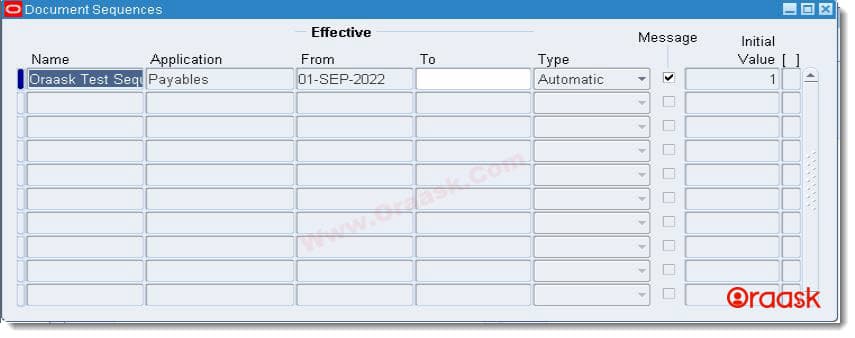
Conclusion
This article gives an example of creating a document sequence in Oracle EBS using API from the backend.
Please don’t use this code directly on production environment, instead test it on test environment first to make sure that API working correctly as per your requirements.
Hopefully, it was clear and concise. Share to Spread Knowledge.
